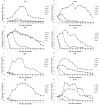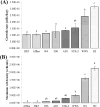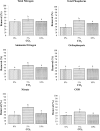Feasibility and efficiency of microalgae cultivation for nutrient recycling and energy recovery from food waste filtrate
- PMID: 39908251
- PMCID: PMC11798482
- DOI: 10.1371/journal.pone.0315801
Feasibility and efficiency of microalgae cultivation for nutrient recycling and energy recovery from food waste filtrate
Abstract
With the continuous growth of economic and population, the generation of food waste has significantly increased in recent years. The disposition of food waste, typically through incineration or landfill, can lead to severe health and environmental problems, accompanied by high additional costs. However, the leachate produced from food waste during collection, transportation and landfill operations predominantly contains high levels of nutrients necessary for microalgae growth. The integration of microalgae cultivation into waste treatment for nutrient recycling presents a potential route for energy recovery from food waste. Therefore, this study was conducted to evaluate the feasibility of microalgae cultivation for food waste filtrate treatment. In addition, the optimal cultivation conditions and nutrient removal efficiency for microalgae in food waste filtrate treatment were investigated. The results indicated that Cyanobacterium aponinum exhibited the highest growth rate (0.530 cells d-1) and maximum cell density (9.6 × 106 cells mL-1) among eight potential microalgal species in 10% food waste filtrate treatment under 10,000 lux and 32°C. It was also observed that C. aponinum had significantly higher biomass productivity and nutrient removal efficiency under a 5% CO2 concentration. The successful cultivation of C. aponinum demonstrated that food waste filtrate could be a promising growth medium, reducing the high cost of cultivation with synthetic medium. However, further efforts should be made to utilize microalgae in food waster filtrate treatment, transitioning from laboratory condition to a pilot scale.
Copyright: © 2025 Chen et al. This is an open access article distributed under the terms of the Creative Commons Attribution License, which permits unrestricted use, distribution, and reproduction in any medium, provided the original author and source are credited.
Conflict of interest statement
The authors have declared that no competing interests exist.
Figures












References
-
- Gustavsson J, Cederberg C, Sonesson U, van Otterdijk R, Meybeck A. Global Food Losses and Food Waste. Food and Agriculture Organization of the United Nations, Rome. 2011.
-
- Mäkipää J. Food Waste Conversion into Biopolymers and Other High Value-Added Products in Hong Kong: Feasibility study. 2015.
-
- Kaza S, Yao LC, Bhadatata P, Van Woerden F. What a Waste 2.0, a Global Snapshot of Solid Waste Management to 2050. World Bank Publications. 2018.
-
- Zhang C, Su H, Baeyens J, Tan T. Reviewing the anaerobic digestion of food waste for biogas production. Renewable & Sustainable Energy Reviews. 2014; 38: 383–392.
MeSH terms
Substances
LinkOut - more resources
Full Text Sources

